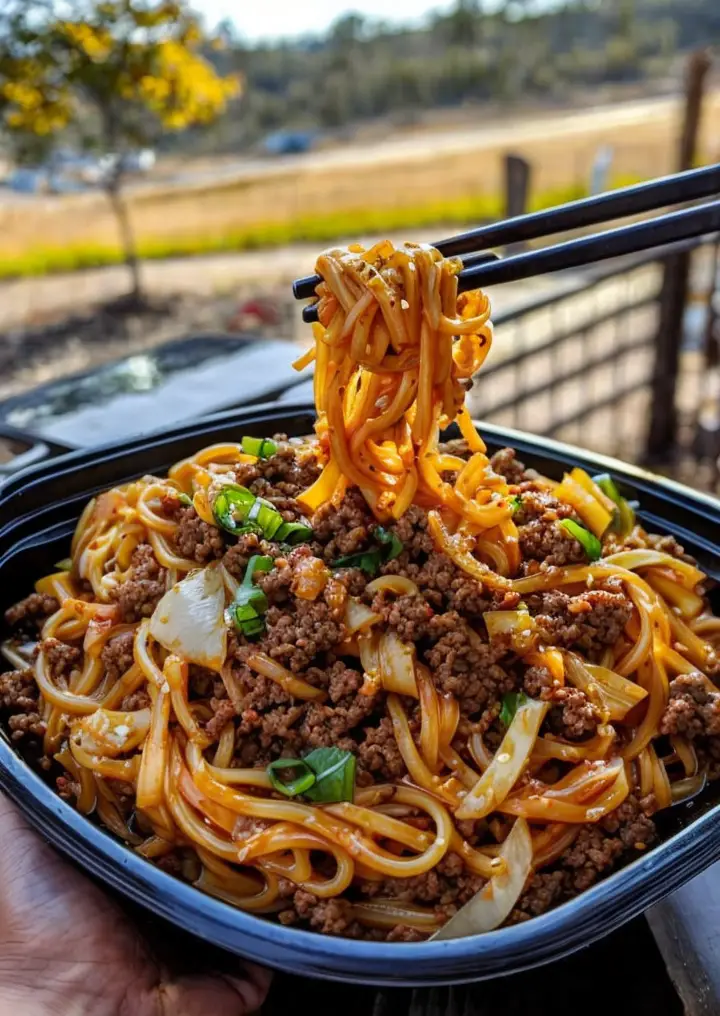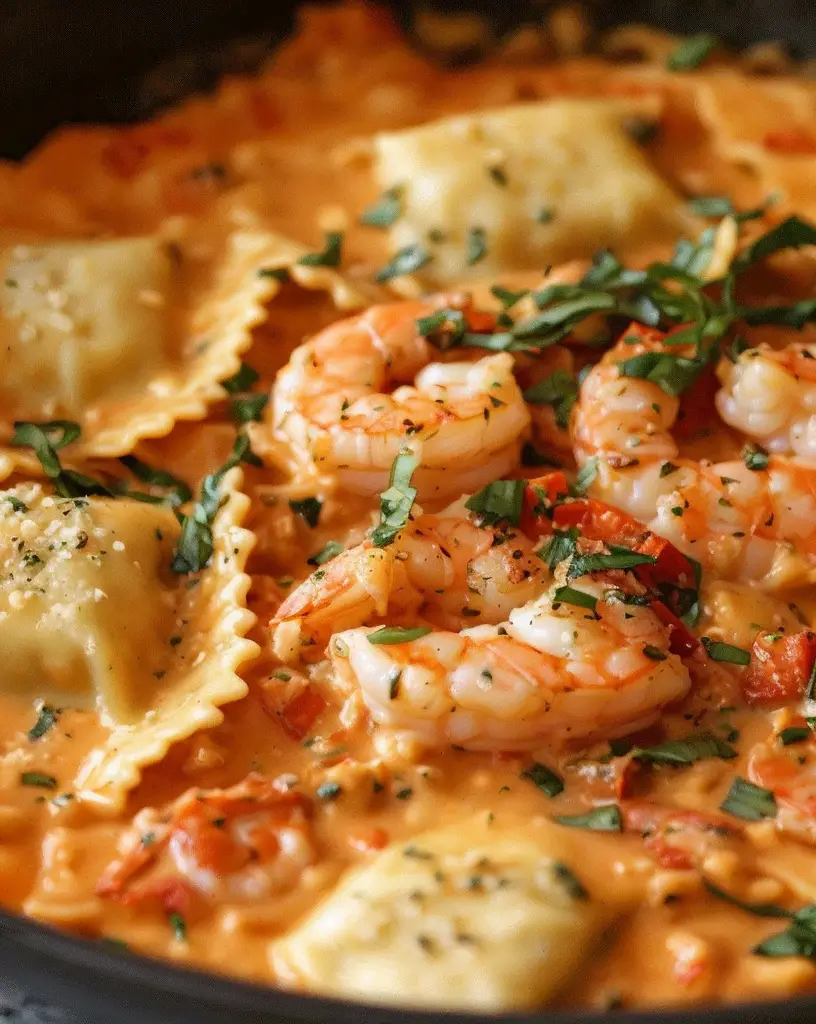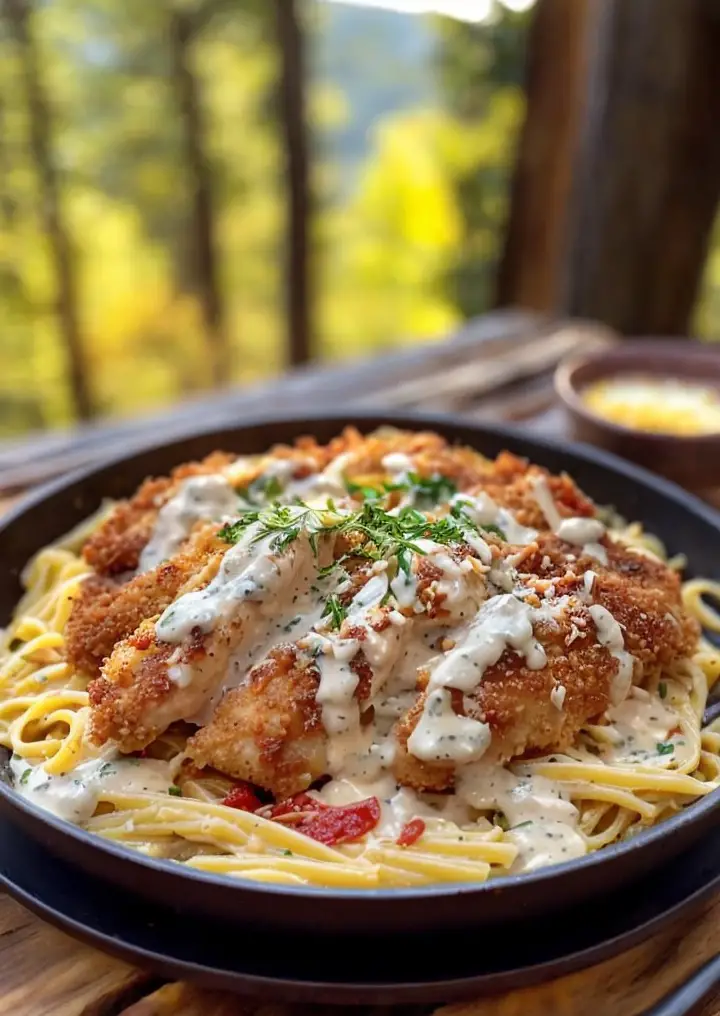Gooey Mozzarella Biscuit Bombs: A Scrumptious Delight
Imagine biting into a warm, flaky biscuit that bursts open to reveal a gooey, melted mozzarella center. These Gooey Mozzarella Biscuit Bombs are not just a delight for your tastebuds but also a feast for the eyes. Perfectly golden on the outside and oozing with cheesy goodness on the inside, these biscuits will have your guests swooning at first bite. Whether you’re hosting a game day or just enjoying a cozy night in, these biscuit bombs are the ultimate comfort food that pairs beautifully with your favorite dipping sauce.
In addition to their incredible flavor, Gooey Mozzarella Biscuit Bombs are straightforward to whip up, making them an excellent choice for cooks of all skill levels. The combination of crispy exterior and stretchy mozzarella creates a mouthwatering texture that is hard to resist. Plus, they are incredibly versatile; toss in some herbs, spices, or your favorite ingredients to customize them to your preference. Get ready to impress your loved ones with this friendly, delicious treat that is sure to become a favorite in your household.
Quick Recipe Highlights
- Flavor Profile: These biscuits boast a savory flavor with a cheesy surprise that pairs well with marinara or ranch dressing.
- Texture: The contrast between the flaky outer layer and the gooey melted cheese provides a satisfying mouthfeel.
- Aroma: They release a wonderful aroma of baked bread and melted cheese, filling your kitchen with irresistible scents.
- Visual Appeal: Golden, puffy biscuits with visible ooze of molten mozzarella are visually enticing for any gathering.
- Skill Level Needed: With their easy preparation and minimal steps, even novice cooks can achieve perfect results.
- Special Equipment: Just a baking sheet and parchment paper are needed, making the cleanup a breeze.
Recipe Overview
- Difficulty Level: This recipe is classified as easy, making it accessible for beginners and fun for seasoned bakers.
- Category: Gooey Mozzarella Biscuit Bombs are a perfect appetizer or snack suitable for parties and movie nights.
- Cuisine: This dish draws inspiration from Italian cuisine where cheese is a star ingredient, enhanced by a Southern biscuit tradition.
- Cost: Affordably made with common pantry staples, this dish comes together without breaking the bank.
- Season: Enjoy these cheesy delights year-round; they are particularly popular in fall and winter during gatherings.
- Occasion: Ideal for game nights, family gatherings, or casual get-togethers with friends.
Why You’ll Love This Recipe
Indulging in Gooey Mozzarella Biscuit Bombs means experiencing a satisfying blend of taste and texture. The crispy exterior gives way to stretchy cheese that oozes out when you take a bite, creating an irresistible combination that satisfies cravings for both bread and cheese. This recipe not only delivers on flavor but also comfort, encapsulating that warm, homey feeling we all love associated with good food.
The convenience of this recipe shines through as it takes merely 15 minutes to prepare and 20 minutes to bake. The simplicity of the steps allows anyone, regardless of culinary skill, to whip up these bombshells on short notice. Whether you’re treating your family to a special snack or preparing to impress guests, these biscuit bombs bring familiarity and flair with minimal fuss.
Nutritionally, these biscuit bombs offer a hearty bite that includes dairy from the mozzarella, providing calcium and protein benefits. While they are indulgent, you can modify the recipe to include vegetables or lean meats, making them not just a delicious treat but also a filling option for snacking or as a light meal.
Socially, Gooey Mozzarella Biscuit Bombs serve as a perfect party food. Their bite-sized nature encourages sharing and conversation, making them a hit at gatherings where guests enjoy mingling. Create an inviting atmosphere with these biscuits served alongside various dipping sauces, letting each person customize their experience.
Lastly, the cost-effectiveness of this recipe cannot be understated. Made from simple ingredients like mozzarella, biscuits, and spices, you can serve a crowd without spending a fortune. Giving you an opportunity to enjoy delicious snacks while maximizing your budget makes this recipe an even more attractive option for your kitchen.
Historical Background and Cultural Significance
The origin of biscuit bombs lies in the Southern United States, where biscuits have been a staple comfort food for generations. Traditionally made with simple ingredients like flour, baking powder, and butter, biscuits have been a versatile dish that can be served with numerous fillings. The indulgent addition of gooey mozzarella cheese into the mix adds a modern twist, reflecting our evolving food culture where textures and flavors blend harmoniously.
Culturally, cheese has always held a cherished place in cuisine around the globe. From Italian mozzarella to Southern biscuits, this recipe beautifully melds culinary traditions that celebrate both simplicity and taste. As a popular appetizer or snack, it exemplifies communal eating traditions where friends and family gather around delicious shared food experiences.
As recipes evolve, variations of our Gooey Mozzarella Biscuit Bombs can be found across different regions. Some might include local spices, while others may introduce different types of cheese or additional fillings to accommodate local taste preferences. This evolution speaks to the adaptability of home-cooked meals that can be personalized to fit individual palates.
Regional variations make these biscuit bombs even more exciting. Influences from Tex-Mex cuisine could introduce spices like jalapeño or cilantro, or you might consider an Italian twist with herbs like basil or oregano. These adaptations highlight how food connects people across cultures, showcasing how everyone’s unique touch can add depth to a shared dish.
Ingredient Deep Dive
– **Mozzarella Cheese:** This semi-soft cheese, originating from Italy, is beloved for its versatility and stringy texture when melted. Mozzarella boasts health advantages such as being high in protein and calcium. When selecting mozzarella, look for fresh varieties for superior meltability; store it in its brine in the refrigerator for optimal freshness. Substitutes like cheddar or gouda can provide similar melting qualities but will alter the flavor profile of your biscuit bombs.
– **Biscuits:** Flour, baking powder, butter, and milk come together to create the soft, flaky body of our biscuit bombs. The choice of flour can influence texture, while cold butter helps achieve flakiness. Biscuits can be stored in a cool place prior to baking, but once baked, they are best enjoyed fresh. For a makeover, consider using whole wheat flour for a healthier twist.
Common Mistakes to Avoid
- Using room temperature butter instead of cold butter can result in dense biscuits instead of flakey layers. Always ensure the butter is chilled for best results.
- Overworking the biscuit dough will lead to tough biscuits instead of tender ones. Mix until just combined for perfect texture.
- Not preheating the oven can cause unevenly cooked biscuit bombs. Ensure your oven is at the correct temperature before placing them inside.
- Cutting the biscuits too large may prevent them from cooking through. Stick to the specified size in the recipe for even baking.
- Skipping the baking sheet’s parchment paper can result in a mess. Use it to avoid sticking and for easy cleanup.
- Not letting the biscuits rest allows for flavor development and flakiness. Allow resting time as specified in the recipe.
- Filling biscuits too full can lead to bursting during baking. Aim for the recommended amount for optimal ooze without the mess.
- Not allowing the cheese to come to room temperature before use can result in uneven melting. Ensure you take it out ahead of time.
- Baking at the wrong temperature can alter texture; make sure your oven thermometer is accurate.
- Forgetting to check for doneness can lead to raw centers; employ the toothpick method for checking.
Essential Techniques
Understanding the art of biscuit making is critical for this recipe. The **cutting in** technique, where cold butter is incorporated into dry ingredients, creates the site for steam during baking, leading to flakiness. To master this, use a pastry cutter or two forks to break the butter into pea-sized pieces without melting it.
Additionally, **folding the dough** when mixing ensures air pockets are preserved, allowing for a lighter biscuit. Always fold gently – over-mixing will eliminate these beneficial air pockets, leading to dense bombs instead of light, airy delights.
Pro Tips for Perfect Gooey Mozzarella Biscuit Bombs
1. Always use cold ingredients to achieve a flaky texture; frozen butter can also work wonders when grated into the dough.
2. Rest the biscuit dough in the fridge for 30 minutes before baking for softer centers.
3. Brush the tops with melted butter right before baking to enhance browning and add flavor.
4. Experiment with filling flavors; herbs, pepperoni, or garlic can elevate the flavor profile.
5. Serve immediately for the best gooey experience, as these are best enjoyed fresh out of the oven.
6. Consider adding a pinch of garlic or onion powder to the biscuit mix for extra flavor depth.
7. Use a combination of cheese for more complex flavors – mozzarella can be paired with havarti or gouda.
8. For a crispy exterior, bake on a hot baking sheet that’s been preheated in the oven.
Variations and Adaptations
Gooey Mozzarella Biscuit Bombs invite creativity. In terms of **regional variations**, a Southern twist might add BBQ sauce inside, marrying the flavors of classic biscuits with smoked meats. Conversely, an Italian adaptation could introduce dried herbs like rosemary or oregano for a Mediterranean flair.
For **seasonal adaptations**, consider stuffing the bombs with pumpkin puree and feta for a delightful fall-inspired treat. Engage with **dietary modifications** by replacing regular biscuits with gluten-free options or using almond flour for a low-carb variant.
To explore **flavor variations**, incorporate spices like cayenne for heat or sundried tomatoes for a tangy profile. On the other hand, you can customize **texture modifications** by using a mixture of shredded and cubed cheese for varied melting experiences.
Lastly, consider **presentation alternatives** by serving the bombs in a cast-iron skillet, garnished with fresh parsley or chives for a rustic look.
Serving and Presentation Guide
Plating is key to enhancing your culinary creation. Serve Gooey Mozzarella Biscuit Bombs on a large platter, allowing guests to see the delightful ooze of cheese. For garnishing, sprinkle fresh herbs such as basil or parsley on top to add a pop of color. Consider accompanying these biscuits with a small bowl of marinara sauce for dipping or a zesty ranch dressing for a new spin.
To ensure the biscuits remain warm during service, plate them in a low-heat oven. Keepportion control in mind; serve a few per person but encourage seconds to let guests indulge. Using minimalistic white plates will help emphasize the vibrant golden color of the biscuits.
Wine and Beverage Pairing
Pair Gooey Mozzarella Biscuit Bombs with a light white wine, such as a Pinot Grigio, that complements the cheese without overpowering it. For a more robust option, a light red like Grenache will offer a beautifully balanced contrast to the savory bombs.
If you’re looking for non-alcoholic alternatives, sparkling water with lemon adds a refreshing touch that cleanses the palate. For coffee lovers, a medium roast paired with a hint of cream can create a delightful contrast to the savory snack.
Ensure beverages are served at the right temperature, with whites chilled and reds slightly below room temperature for optimal enjoyment.
Storage and Shelf Life
To maintain the freshness of your Gooey Mozzarella Biscuit Bombs, store them in an airtight container at room temperature for up to two days. For longer storage, refrigerate them for up to a week. If you want to keep them for an extended period, these bombs freeze well; seal them tightly in freezer-safe bags for up to three months.
When reheating, place the biscuits back in a 350°F oven for about 10-15 minutes until heated through, ensuring they regain their crisp exterior. Always inspect them for any signs of spoilage, such as a sour smell or visible mold.
Make Ahead Strategies
If you’re planning to serve Gooey Mozzarella Biscuit Bombs at a gathering, they can be prepared ahead of time. You can make the dough and fill the biscuits, placing them in the fridge up to 24 hours before baking. This allows the flavors to meld beautifully without compromising texture.
For assembly, keep the cheese and other fillings separate until just before you’re ready to bake to prevent sogginess. If you prepare them the night before, an extra 5-10 minutes in the oven may be necessary for a perfect bake.
When serving, add fresh ingredients such as herbs or dipping sauces just before serving for a burst of freshness.
Scaling Instructions
Scaling up or down is simple with this recipe. For halving the batch, keep the baking time similar, but monitor the biscuits closely for doneness. Doubling or tripling the recipe is also feasible, although you may need to bake in batches based on your oven size or use multiple sheets.
If using larger baking sheets, adjust the spacing between biscuits as they need room to expand as they bake. Ensure to keep an eye on the biscuit bombs in the oven; larger quantities might require a bit more time, while smaller batches should be checked earlier to avoid overbaking.
For storing larger quantities, ensure airtight containers are adequately sized to fit all biscuits without squishing them.
Nutritional Deep Dive
Gooey Mozzarella Biscuit Bombs provide a delightful balance of macronutrients with carbohydrates coming mostly from the biscuits, and protein from the mozzarella. Each bomb generally contains around 150-200 calories, influenced by your filling choices.
In terms of micronutrients, calcium and phosphorus from the cheese contribute to strong bones, while the vitamins in herbs or spices can offer additional health benefits. During portion analysis, keep in mind that moderation is key to enjoying these delicious snacks within a balanced diet.
If you’re focusing on weight management, consider serving these biscuit bombs with a side salad to add volume and fiber to your meal, allowing you to enjoy the richness without compromising on dietary goals.
Dietary Adaptations
For those following a **gluten-free diet**, use gluten-free biscuit mix alongside tapioca or almond flour for a crispy biscuit bomb without the gluten.
**Dairy-free** alternatives can involve substituting mozzarella with cashew or almond cheese, which maintains creamy textures while satisfying those with lactose sensitivities.
For a **vegan option**, replace butter with coconut oil or a vegan substitute along with a plant-based cheese.
Those on a **low-carb** or **keto diet** can utilize cheese-based doughs or almond flour biscuits for an indulgent yet compliant treat.
The recipe can also adapt minimally to fit **paleo** guidelines using almond flour and avoiding processed items while maintaining taste and texture.
Troubleshooting Guide
If you encounter **texture issues**, such as a dense biscuit, review your butter incorporation technique; remember to cut in the butter well. If the shells seem too dry or difficult to chew, consider adjusting moisture levels by adding a little more milk gradually during mixing.
For **flavor balance problems**, always taste your fillings before closing up the biscuits. If you find the flavor too bland, add spices or salt carefully until you reach the desired taste.
If there are **temperature problems** after baking, ensure your oven is properly calibrated. Misleading temperatures can lead to undercooking or overcooking.
Should you experience **ingredient substitution issues**, keep in mind the balance between wet and dry ingredients to prevent compromising the texture; this is particularly pertinent when trying alternatives in baking.
And if you run into **timing concerns**, adapt your baking time by checking doneness at intervals to avoid overbaking or underbaking, as ovens can vary widely in temperature consistency.
Recipe Success Stories
Readers have shared delightful feedback after trying our Gooey Mozzarella Biscuit Bombs, often mentioning how easy and satisfying the process was. Many have reported their families inhaling these bombs at gatherings, with the oozy cheese stealing the show every time.
Variation successes are commonly shared, with people experimenting with different fillings based on their preferences—ranging from spicy jalapeños to sweet caramelized onions—and passing on tips about their favorite combinations.
Some readers even provided photography tips, emphasizing that the key to capturing those golden biscuit colors lies in natural lighting and a good background, like dark wood or marble, to enhance the visual appeal of the gooey cheese-filled center.
Engagement within our cooking community continues to grow as fans of this recipe explore and share their personalized twists, fostering a delicious cycle of creativity.
Frequently Asked Questions
Can I freeze the biscuit bombs?
Yes! You can freeze the unbaked biscuit bombs. Assemble them, then freeze on a baking sheet. Once solid, transfer to an airtight container or freezer bag for up to three months. Bake from frozen, adding a bit of extra baking time.
What type of cheese works best?
While mozzarella is traditional due to its melting quality, feel free to experiment with other cheeses like cheddar, gouda, or a mix for a more complex flavor. Your selections depend on personal taste or desired intensity.
How long will leftover bombs stay fresh?
Leftovers can be stored in an airtight container at room temperature for about two days or in the refrigerator for up to a week. For longer storage, freezing is highly recommended.
Can I make these biscuits ahead of time?
Absolutely! You can prepare and fill the biscuit bombs ahead of time, storing them in the fridge before baking. They can also be assembled and frozen, allowing for quick baking when you’re ready.
How can I make them spicier?
Add spices like crushed red pepper flakes into the cheese filling or mix in diced jalapeños for added heat! Alternatively, serve with spicy dipping sauces.
What dipping sauces work best with these biscuit bombs?
Classic marinara, honey mustard, ranch dressing, or a spicy aioli will complement these biscuits perfectly. Feel free to explore your favorites and create a dipping sauce bar!
Can I use low-fat cheese?
Yes, low-fat cheese can be used, but keep in mind that this may alter the melting quality and flavor slightly. If going low-fat, seek a cheese designed for baking.
Should I let the dough rest before baking?
Letting the dough rest is not mandatory, but allowing it to chill slightly can help achieve better texture by minimizing shrinkage and increasing flakiness.
Can I add protein to these bombs?
Definitely! Feel free to incorporate cooked meats like pepperoni, ham, or shredded chicken for a more filling snack. Just be careful not to overstuff!
Are there vegan options available?
Yes! You can use plant-based cheese and substitute butter with vegan margarine or coconut oil to create enjoyable vegan mozzarella biscuit bombs.
Additional Resources
For those interested in more delicious treats, try our related recipes such as **Cheesy Garlic Breadsticks** or **Stuffed Crescent Rolls**. Dive deeper into baking techniques with guides on biscuit making or explore different **cheese selections** needed for the best results.
Don’t forget to choose your kitchen equipment wisely. A reliable baking sheet or pastry cutter can significantly impact the baking process. As you unlock more of these flavors, consider seasonal variations, like adding pumpkin for fall or sprinkles for fun variations for kids.
Join the Conversation
We’d love to hear your thoughts on these Gooey Mozzarella Biscuit Bombs! Share your experiences, photos, and adaptations with us through social media. Engage with fellow food lovers in our community as we explore diverse variations of our recipe and bring everyone together through shared culinary experiences. Your feedback not only helps others but inspires creativity in our cooking journey, ensuring that every kitchen feels at home with these delightful treats.
The Recipe
Gooey Mozzarella Biscuit Bombs
Serves: 12 servings
Prep Time: 15 mins
Cook Time: 20 mins
Total Time: 35 mins
Kitchen Equipment Needed
- Baking sheet
- Parchment paper
- Mixing bowls
- Pastry cutter (optional)
Ingredients
- 2 cups all-purpose flour
- 2 teaspoons baking powder
- 1/2 teaspoon salt
- 1/2 cup cold butter, cubed
- 3/4 cup milk
- 1 cup shredded mozzarella cheese
Directions
- Preheat your oven to 400°F (200°C) and line a baking sheet with parchment paper.
- In a large mixing bowl, combine the flour, baking powder, and salt.
- Add the cold butter and use a pastry cutter or your fingers to work it into the flour until the mixture resembles coarse crumbs.
- Stir in the milk until just combined, being careful not to overmix.
- Dust your work surface with flour and roll the dough out until about 1/2 inch thick.
- Cut out rounds using a biscuit cutter and place a spoonful of mozzarella cheese in the center of each round.
- Fold the biscuit over the cheese, sealing the edges and placing them seam side down on the baking sheet.
- Bake for 15-20 minutes, or until golden brown and the cheese is bubbly.
- Allow to cool slightly before serving with your favorite dipping sauce.
Recipe Notes
- Feel free to experiment with different cheeses or add herbs for flavor.
- For a spicier version, add diced jalapeños or crushed red pepper to the cheese filling.
- Make sure to keep the butter cold for the best texture.










